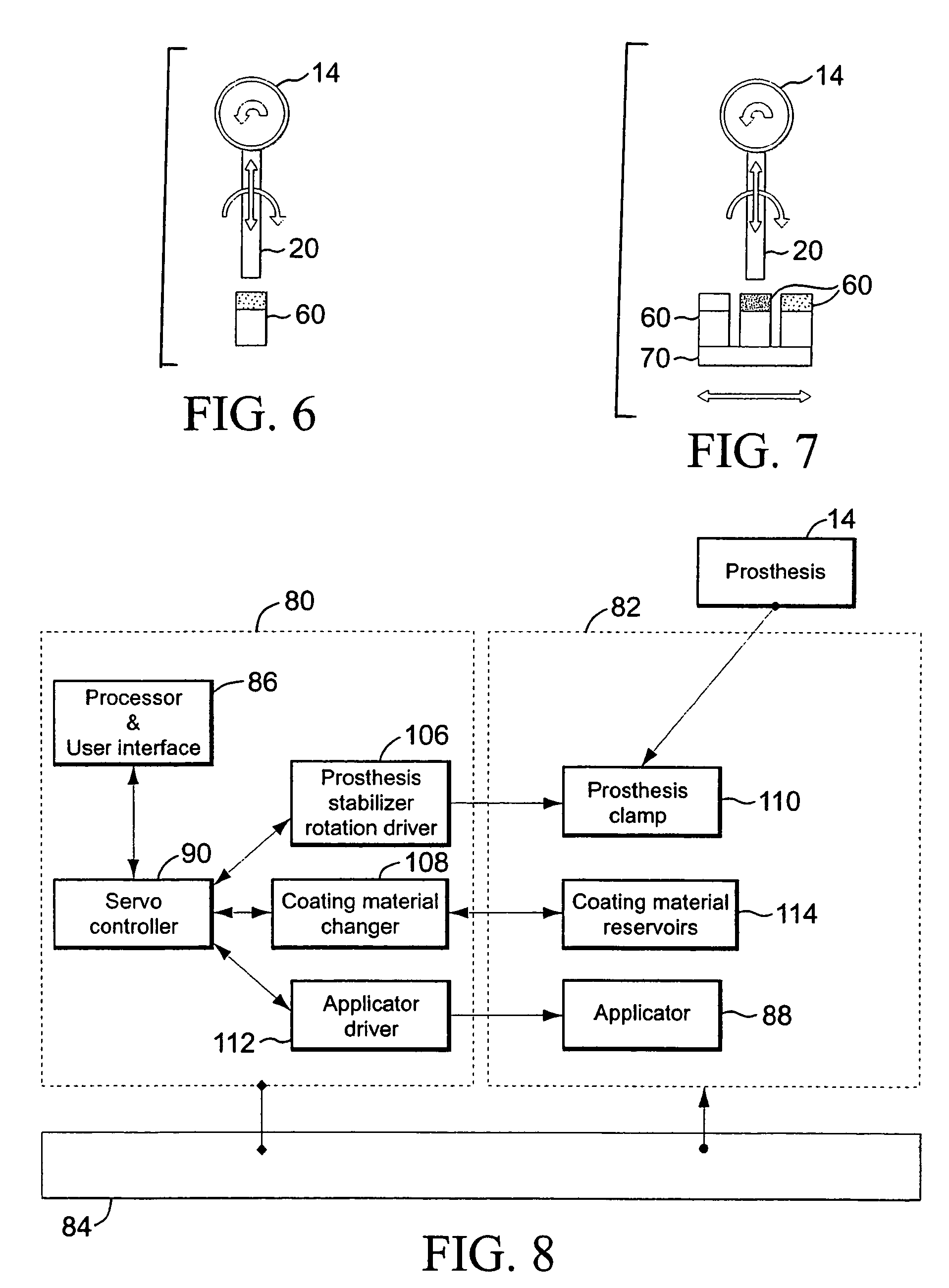Contact coating of prostheses
a technology of contact coating and prosthesis, which is applied in the field of implantable devices or prostheses, can solve the problems of occlusion of conduits, thrombosis acute and subacute, and collapse of inner flaps or torn arterial linings,
- Summary
- Abstract
- Description
- Claims
- Application Information
AI Technical Summary
Benefits of technology
Problems solved by technology
Method used
Image
Examples
Embodiment Construction
[0001]1. Field of the Invention
[0002]This invention relates generally to implantable devices or prostheses. More particularly, the invention is directed to an apparatus and method for coating a prosthesis using contact printing.
[0003]2. Definitions
[0004]The term “prosthesis” refers to any one of many medical coating applications including but not limited to coronary stents, peripheral vascular stents; abdominal aortic aneurysm (AAA) devices, biliary stents and catheters, TIPS catheters and stents, vena cava filters, vascular filters and distal support devices and emboli filter / entrapment aids, vascular grafts and stent grafts, gastro enteral tubes / stents, gastra enteral and vascular anastomotic devices, urinary catheters and stents, surgical and wound drainings, radioactive needles and other indwelling metal implants, bronchial tubes and stents, vascular coils, vascular protection devices, tissue and mechanical prosthetic heart valves and rings, arterial-venous shunts, AV access gra...
PUM
| Property | Measurement | Unit |
|---|---|---|
| thickness | aaaaa | aaaaa |
| thickness | aaaaa | aaaaa |
| area | aaaaa | aaaaa |
Abstract
Description
Claims
Application Information
 Login to View More
Login to View More - R&D
- Intellectual Property
- Life Sciences
- Materials
- Tech Scout
- Unparalleled Data Quality
- Higher Quality Content
- 60% Fewer Hallucinations
Browse by: Latest US Patents, China's latest patents, Technical Efficacy Thesaurus, Application Domain, Technology Topic, Popular Technical Reports.
© 2025 PatSnap. All rights reserved.Legal|Privacy policy|Modern Slavery Act Transparency Statement|Sitemap|About US| Contact US: help@patsnap.com



